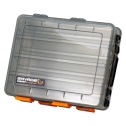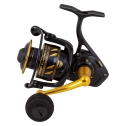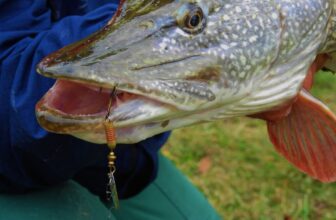Pollock are an ultra-exciting sport fish in the UK. Their wild eyes and protruding lower jaw make them a real spectacle. And the places the fish inhabit are truly wild. The best pollock fishing locations in the UK are primarily all peninsulas with incredibly deep, kelp and structure-rich waters that can look a little intimidating. Because they are.
Ultimately to catch bigger pollock you should search out incredibly deep, ominous-looking marks. Fish from the bottom, strike aggressively and use strong line and leader material. But there’s more to it than that.
So, find our top pollock fishing tips below and get yourself up for some of the best fishing the UK has to offer.
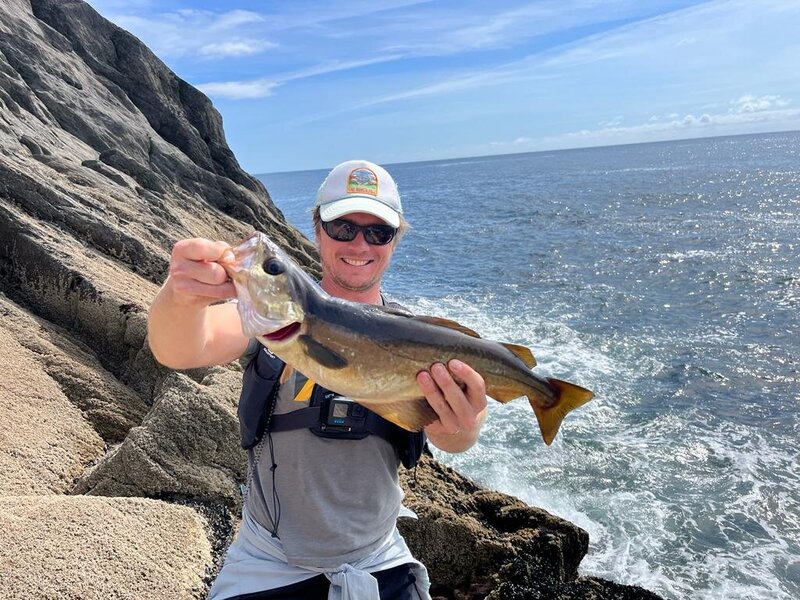
Table of contents
Identify structure-rich areas of deep water
The deeper the water you’re able to fish, the better your chance of catching big pollock. Or at least finding them. And as a general rule pollock tend to reside in schools of similar size and feed over areas rich in structure. Offshore wrecks and waters abundant with kelp and seaweed are prime locations.
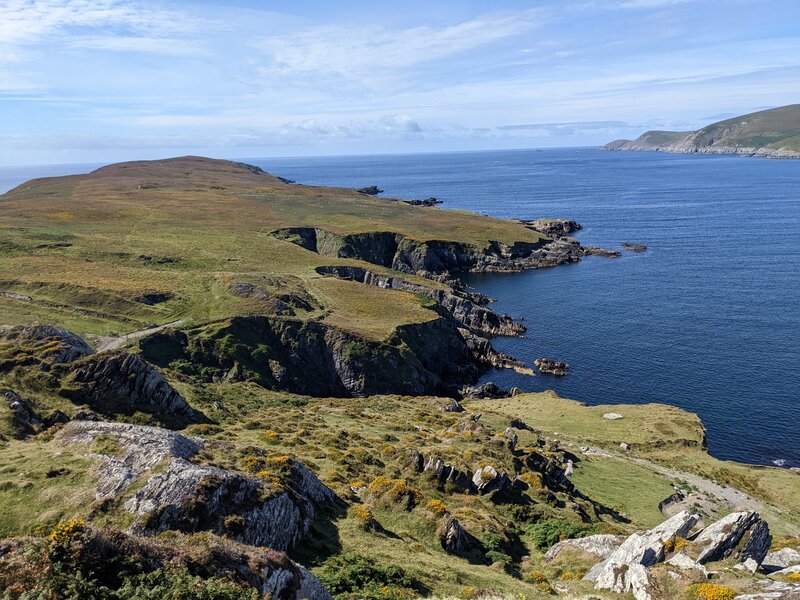
Older pollock have been known to cannibalise the young, so living in schools with other fish of a similar size is a survival trait not just commonplace to pollock.
By using Navionics – or another water depth mapping tool – you can establish areas of deeper water you’re able to reach. As pollock are non-migratory fish, only going offshore to spawn once a year in the winter months, finding them is the hard part.
Fish from the bottom
If you’re lure fishing then letting your lure sink to the bottom feels counter-intuitive. But as pollock live in particularly deep water, you must have the patience to let your sink to the bottom before retrieving it.
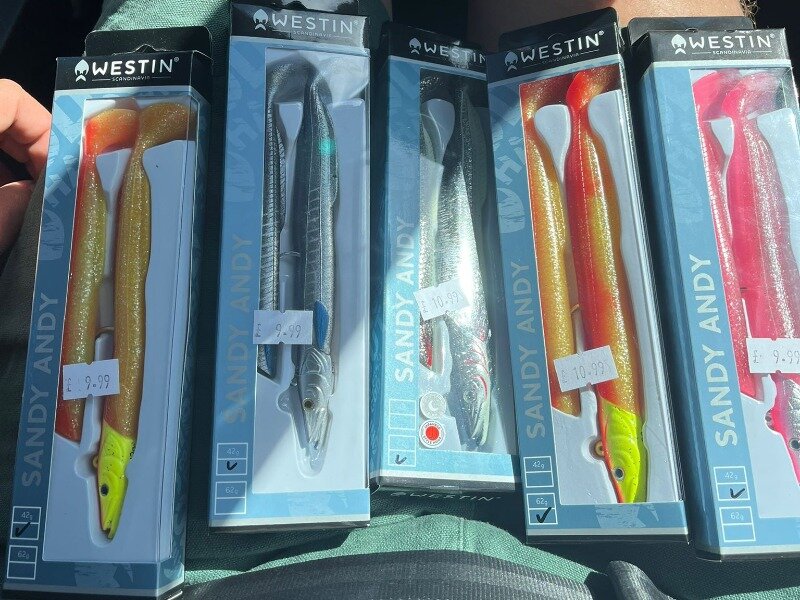
If you’re bait fishing of course you will naturally fish from the bottom. But the key feature when lure fishing is to allow the lure to sink to the bottom, before reeling in. When fishing the Beara Peninsula, waiting for the lure to hit the bottom could take 30 seconds or more. A long time to leave the bail arm open.
Use larger, single hooks
We’re advocates of single, barbless hooks here at Men Who Stare At Floats. Something that is particularly useful when targeting larger pollock. Not only are we more likely to catch a larger fish, we are also less likely to cause any damage to the pollock.
Using larger, barbless hooks is effective at reducing the number of deep hooking injuries. Particularly when targeting fish, like pollock, that reside in deep water or are at least semi-pelagic, as the force of the strike and long fight is consistent with hooking-related injuries.
Whilst treble hooks have their uses – particularly when pike fishing – single hooks are much more effective when targeting larger, more powerful fish as they’re much less prone to bending and can be ‘thrown’ less easily than trebles. When enough pressure is applied to a treble hook, the individual hooks can act as levers, with one bending away from the others.
Unfortunately, almost every lure or hook you buy will be barbed, which has always struck us as highly unethical. To remove the barbs you’ll need a pair of pliers that can crimp the barb flat.
Use strong line and leader materials
Not only are pollock seriously hard-fighting fish, but the deeper, structure-rich water is particularly easy to break off in. As such, purchasing some of the best braided line and top-quality fluorocarbon is essential – preferably a dark green or blue colour.
Whilst bright colours are seemingly increasing in popularity. using neutral or natural colours that are harder to see is a much more sensible option. Particularly as pollock are hunters who rely on sight, their huge eyes are designed to take in as much light as possible in the dark recesses of kelp forests.
We’d recommend using a minimum of 25lb line and leader material if you’re targeting large pollock. But preferably 30lb to minimise re-rigging and breakages.
The 7 Best Lure Fishing Boxes in 2023 Editor’s choice
Strike Aggressively
When a pollock hunts prey it attacks from below and instinctively dives down back to its kelp and snag-ridden home. If you allow a larger pollock to drag you down to the depths, the likelihood of your line breaking or becoming tangled is high.
To prevent this, when fishing with bait or lures, you need to strike aggressively. Particularly if you have a big fish on the other end. Strike and drag the fish up away from the kelp and maintain a level of control. Don’t let the fish dictate terms and use one of our favourite pollock fishing lures.
Reel in your lure consistently
When lure fishing for bass, your retrieval style and speed can – and should – vary considerably. You are typically looking to cause substantial surface (or just sub-surface) movement without worrying about being subtle. Bass are ultra-aggressive predators, so causing a commotion is a tried and tested method.
Whereas with pollock a steady retrieve tends to be the most effective. Once your lure has hit the bottom, retrieving in steadily, letting your lure do the work is a simple, but effective approach. There’s generally no need to do anything other than reeling in for 10, 15 or 20 turns of your reel before pausing and restarting.
The 6 Best Sea Fishing Spinning Reels in 2023 Editor’s choice
Pause your retrieve at the surface
You’ll notice that pollock will follow your lure in all the way to the surface when lure fishing. Their upward-facing eyes and protruding lower jaw are designed to attack prey from below. Hence they follow their prey to the surface.
By pausing your lure retrieve at the surface and remaining watchful, it’s almost guaranteed you will catch more fish. By pausing your retrieve you’re giving the pollock an easy option to strike.
There’s nothing more frustrating than reeling in for a full minute or more and missing a strike at the surface because you weren’t being patient or paying attention. Using a figure-of-eight motion at the end of your retrieve gives the pollock an opportunity to strike, so weave that into your fishing style.
Be ready to strike on the drop
This is particularly useful if you’re fishing in particularly deep water as you could be waiting for 30, 40 or 50 seconds for your lure to reach the bottom.. Think the Orkney Islands, the Beara Peninsula or the Isle of Skye.
And when your lure is descending for such a distance, it’s not uncommon for pollock to take your lure when it’s descending. But as you’ll need to leave the bail arm open for the descent, you’ll need to pay close attention to your line on the drop.
When your lure (or bait) is descending through the briny depths with an open bail arm, keep your index finger on the line so you can feel the vibrations. If something feels like a take, you can close the bail arm quickly and strike.
Bigger lures don’t necessarily mean bigger pollock
Taking a variety of lures with you when lure fishing for pollock is key. Metals for casting distance and their sinking capabilities are great. Soft plastics from 20 – 60g are equally effective. This PB pollock was caught on a 32g Surf Seeker close to the surface after a long, deep retrieve. It was also the only pollock we landed that managed to pull drag, but that’s a different story.
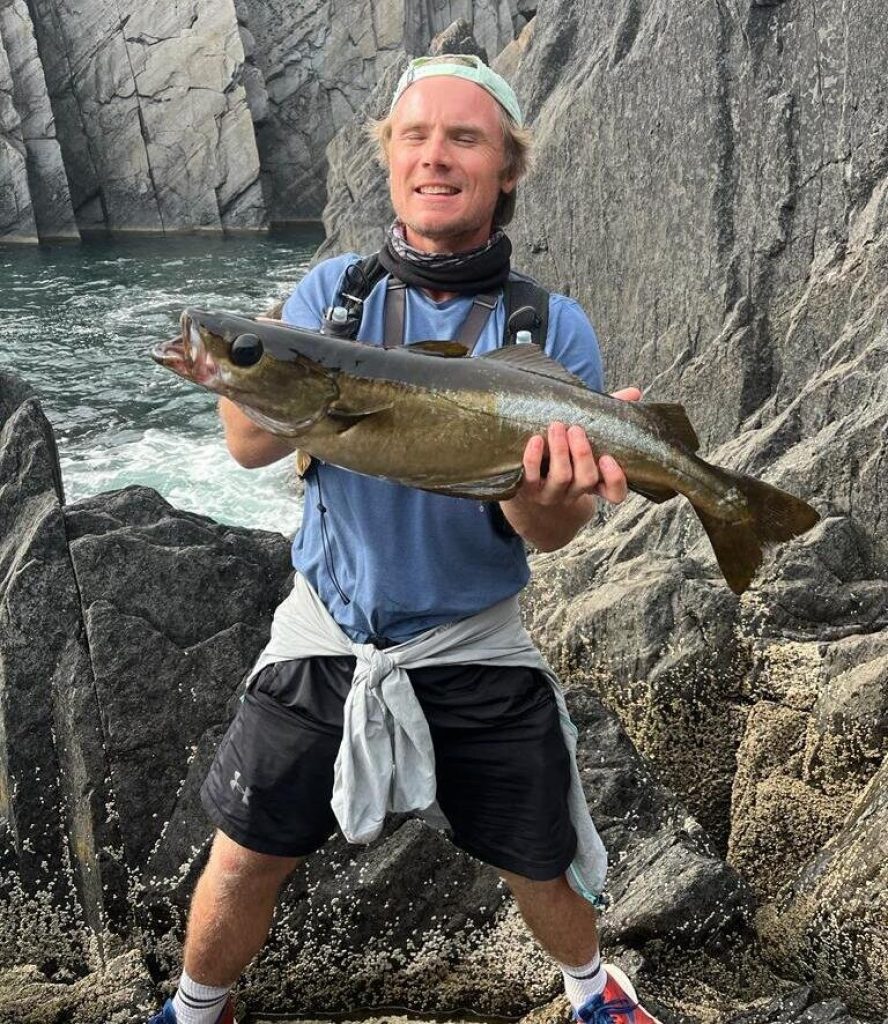
Colour-wise (from personal experience) we found that soft plastics with red tips and metals tinged with green were the best. But this could be a seasonal or location-based misnomer.
Our favourite lure for pollock fishing are metal seekers. 32 – 80g + depending on the capacity of your rod. When fishing from the shore larger metals are essential for reaching deeper spots and, thanks to their density, sink better than other lures. Just be sure to get the sinking variety.
Pollock are present all day, but high tide is still king
As pollock live in particularly deep water, they’re less affected by the tide than bass or other predatory UK fish. However, peak pollock fishing conditions are still slightly overcast conditions, in rough waters and around high tide.
From personal experience we have found the hour before and after high tide tends to be when the biggest pollock turns on. So making sure you’re still fishing these times is key if you’re after really large pollock.
Harry
Hi, I'm Harry. A keen, albeit exceedingly average fisherman. I've spent the last few years trawling London's waterways with - if I'm being kind - varied success and would love to help you avoid the mistakes I have made.

